-
 Bitcoin
Bitcoin $82,666.6102
-0.79% -
 Ethereum
Ethereum $1,784.7960
-1.02% -
 Tether USDt
Tether USDt $0.9996
0.02% -
 XRP
XRP $2.1257
-0.64% -
 BNB
BNB $592.3902
-0.42% -
 USDC
USDC $0.9999
0.02% -
 Solana
Solana $117.4685
-1.68% -
 Dogecoin
Dogecoin $0.1672
-1.55% -
 Cardano
Cardano $0.6486
-2.86% -
 TRON
TRON $0.2388
-0.62% -
 Chainlink
Chainlink $12.6264
-1.48% -
 UNUS SED LEO
UNUS SED LEO $8.9748
-4.45% -
 Toncoin
Toncoin $3.2369
-5.07% -
 Stellar
Stellar $0.2523
-3.16% -
 Avalanche
Avalanche $17.8476
-2.45% -
 Shiba Inu
Shiba Inu $0.0...01211
-1.64% -
 Sui
Sui $2.1892
-2.55% -
 Hedera
Hedera $0.1597
-3.77% -
 Litecoin
Litecoin $82.3531
-1.88% -
 Polkadot
Polkadot $3.9109
-4.55% -
 MANTRA
MANTRA $6.2589
-1.98% -
 Bitcoin Cash
Bitcoin Cash $297.7127
-1.02% -
 Dai
Dai $1.0001
0.04% -
 Bitget Token
Bitget Token $4.4351
-2.15% -
 Ethena USDe
Ethena USDe $0.9991
-0.03% -
 Pi
Pi $0.6450
21.59% -
 Monero
Monero $216.0365
0.55% -
 Hyperliquid
Hyperliquid $11.4792
-0.63% -
 Uniswap
Uniswap $5.8107
-0.91% -
 OKB
OKB $50.4811
4.99%
Deepcoin leverage trading principle
Leverage trading on Deepcoin multiplies trading funds by a selected multiplier, potentially amplifying profits and losses proportionally.
Nov 24, 2024 at 01:50 pm

Deepcoin Leverage Trading Principle
Understanding Leverage Trading
Leverage trading refers to the use of borrowed funds to magnify potential profits in financial markets. In the context of cryptocurrency trading platforms like Deepcoin, leverage allows traders to access funds beyond their account balance and amplify both potential gains and losses.
Key Points of Leverage Trading:
- Multiplier: Leverage is typically expressed as a multiplier, which represents the amount of funds borrowed in relation to the trader's account balance. For example, a 10x leverage would borrow 9 times the amount of funds in the account balance.
- Initial Margin: A portion of the trader's account balance (typically 1-5%) is required as collateral for leverage trading. This ensures that the borrowed funds are secured in case of adverse market movements.
- Maintenance Margin: A higher percentage of the trader's account balance is required to maintain the leverage position, typically in the range of 15-30%. When the account balance falls below the maintenance margin, the position may be liquidated to reduce risk.
How Leverage Trading Works on Deepcoin:
Deepcoin offers leverage trading for various cryptocurrency pairs. The following steps explain the general principle of leverage trading on the platform:
- Choose a Trading Pair: Select the cryptocurrency pair you wish to trade, such as BTC/USDT or ETH/USDT.
- Set Leverage Multiplier: Choose the appropriate leverage multiplier based on your risk tolerance and trading strategy. Higher leverage increases potential profits but also magnifies losses.
- Place a Trade: Determine the entry and exit points for your trade and place your order.
- Margin Allocation: Deepcoin allocates the necessary funds for the leveraged position based on the leverage multiplier and initial margin requirement.
- Position Monitoring: Continuously monitor the position, ensuring that it meets the maintenance margin requirements.
- Profit/Loss Calculation: When the position is closed, the profit or loss is calculated based on the leverage multiplier. Gains are amplified in relation to the multiplier, while losses are also magnified.
Deepcoin Leverage Trading Options:
Deepcoin provides a range of leverage options for traders, with varying multipliers and requirements:
- 1x Leverage: No leverage used, only trading with available account balance.
- 5x Leverage: Multiplies trading funds by 5, requiring 20% initial and maintenance margin.
- 10x Leverage: Multiplies trading funds by 10, requiring 10% initial and maintenance margin.
- 20x Leverage: Multiplies trading funds by 20, requiring 5% initial and maintenance margin.
Advantages of Leverage Trading on Deepcoin:
- Amplified Profits: Leverage allows traders to potentiate potential gains, leveraging small capital to generate significant profits.
- Hedge Against Market Moves: Leverage trading can be used to hedge against adverse market movements, minimizing potential losses.
- Trading Flexibility: Leverage provides traders with greater flexibility, enabling them to access larger trading amounts and explore different strategies.
Risks of Leverage Trading on Deepcoin:
- Magnified Losses: While leverage amplifies potential profits, it also magnifies potential losses, leading to substantial capital depletion in case of adverse market movements.
- Liquidation Risk: When the account balance falls below the maintenance margin level, the position may be liquidated to cover potential losses, leading to forced exit from the trade.
- Volatility Exposure: Cryptocurrencies are subject to high volatility, which can amplify the risks associated with leverage trading, making it unsuitable for all traders.
Leverage Trading on Deepcoin: A Step-by-Step Guide
Step 1: Prepare Your Account
- Open a free Deepcoin account and complete the necessary verification procedures.
- Fund your account with sufficient assets to cover the initial margin requirement and trading capital.
- Select the cryptocurrency pair you wish to trade and navigate to the "Trade" section.
Step 2: Set Leverage Parameters
- Choose the leverage multiplier that aligns with your risk tolerance and expected market conditions. Higher leverage carries greater risks and potential rewards.
- Review the margin requirements for the selected leverage multiplier.
- Ensure that your account balance meets or exceeds the initial margin requirement.
Step 3: Place a Trade
- Specify the order type, entry price, and trade amount.
- The total value of the position will be calculated based on the leverage multiplier selected.
- Review the order details and confirm the execution.
Step 4: Manage Your Position
- Monitor the performance of the position closely, ensuring that it generates profits or meets your trading objectives.
- Adjust the leverage or position size if necessary to manage risk and maximize returns.
- Set stop-loss and take-profit orders to limit potential losses and lock in gains.
Step 5: Exit the Position
- Decide when to close the position based on market conditions and your trading strategy.
- Close the position by placing a counter-order or adjusting the position size.
- The profit or loss will be credited or debited to your account balance based on the leverage multiplier.
Conclusion
Leverage trading on Deepcoin offers great potential for amplified returns but also carries significant risks. Traders must fully understand the mechanics of leverage trading, manage their risk exposure, and carefully consider the impact of leverage on their trading outcomes before engaging in leveraged positions.
Disclaimer:info@kdj.com
The information provided is not trading advice. kdj.com does not assume any responsibility for any investments made based on the information provided in this article. Cryptocurrencies are highly volatile and it is highly recommended that you invest with caution after thorough research!
If you believe that the content used on this website infringes your copyright, please contact us immediately (info@kdj.com) and we will delete it promptly.
- Aptos (APT) Spot ETF Application by Bitwise Asset Management Sparks Fresh Excitement in the Crypto Market
- 2025-04-06 00:20:12
- Bitcoin and Ethereum Prices End Q1 of 2025 in the Red
- 2025-04-06 00:20:12
- CryptoQuant Reveals the Growing Influence of “New Whales” in the Bitcoin Market
- 2025-04-06 00:15:12
- NoviqTech Tokenizes Recycled Amines on Hedera Network
- 2025-04-06 00:15:12
- FX Guys (FXG) Token, The Next 100x Altcoin
- 2025-04-06 00:10:12
- DePIN track leader Roam will participate as a primary sponsor in the 2025 Hong Kong Web3 Carnival
- 2025-04-06 00:10:12
Related knowledge
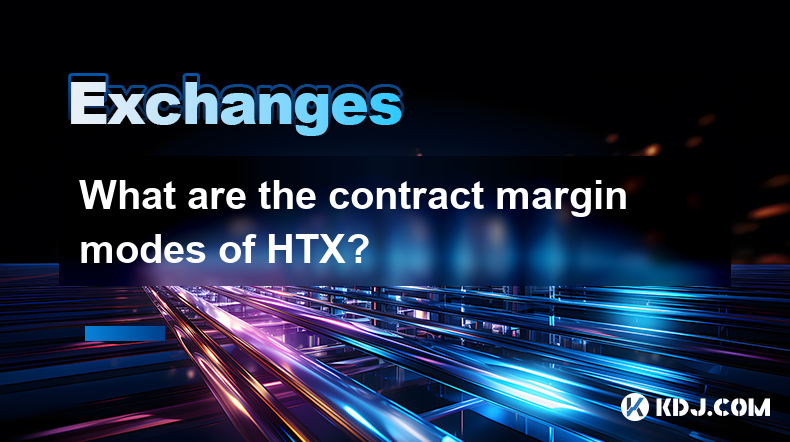
What are the contract margin modes of HTX?
Apr 04,2025 at 02:14pm
HTX, formerly known as Huobi, offers various contract margin modes to cater to the diverse needs of traders. Understanding these modes is crucial for effectively managing risk and maximizing potential returns. In this article, we will delve into the different contract margin modes available on HTX, explaining their features, benefits, and how to use the...
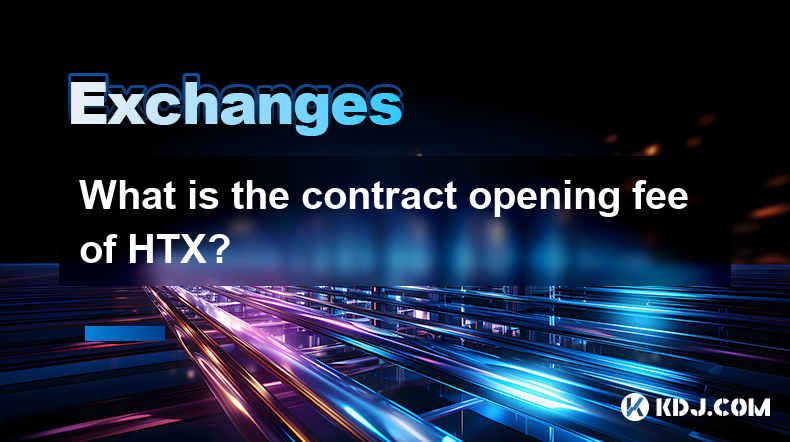
What is the contract opening fee of HTX?
Apr 05,2025 at 09:07pm
The contract opening fee on HTX, formerly known as Huobi, is a critical aspect for traders to understand before engaging in futures trading on this platform. HTX charges a contract opening fee that varies depending on the type of contract and the user's trading level. This fee is essential to consider as it directly impacts the overall cost of trading a...
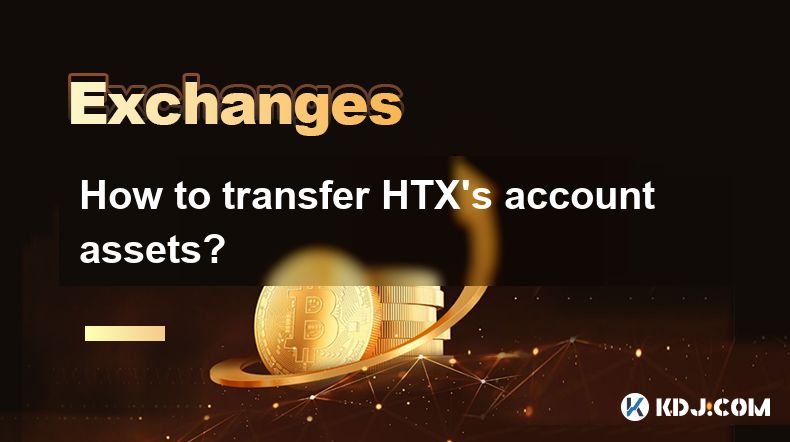
How to transfer HTX's account assets?
Apr 04,2025 at 09:28pm
Introduction to HTX and Account AssetsHTX, formerly known as Huobi, is a leading cryptocurrency exchange that offers a wide range of trading services. One of the essential functions for users is the ability to transfer assets within their HTX accounts. Whether you're moving funds between different wallets or sending assets to another user, understanding...
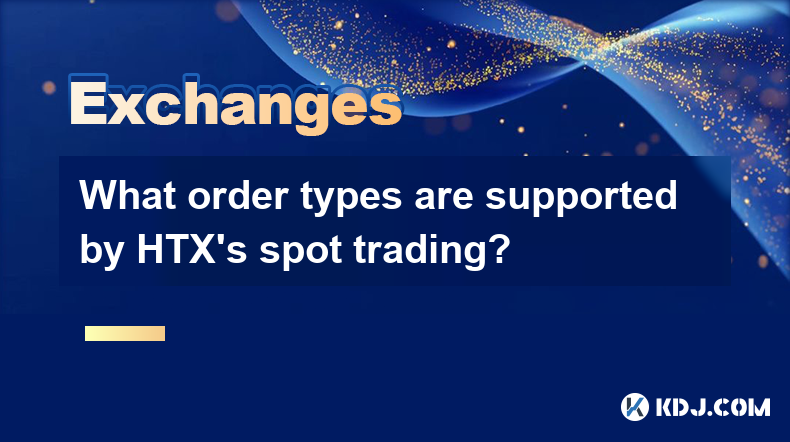
What order types are supported by HTX's spot trading?
Apr 04,2025 at 04:42am
HTX, formerly known as Huobi, is a well-established cryptocurrency exchange that offers a variety of order types for spot trading. Understanding these order types is crucial for traders looking to execute their strategies effectively. In this article, we will explore the different order types supported by HTX's spot trading platform, providing detailed ...
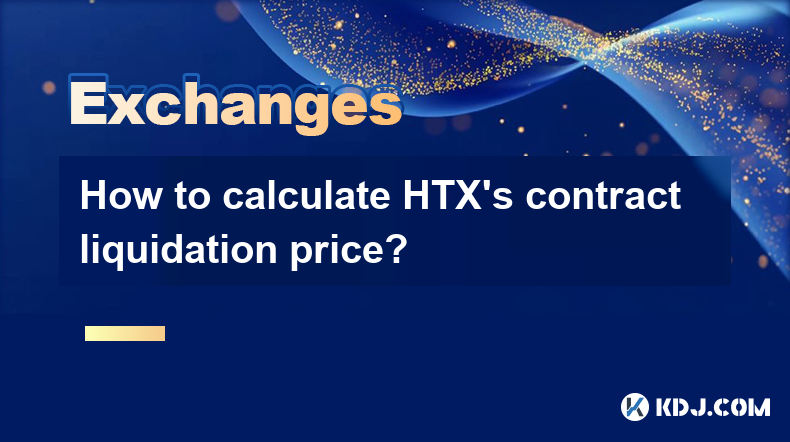
How to calculate HTX's contract liquidation price?
Apr 05,2025 at 08:07pm
Calculating the liquidation price of a contract on HTX (formerly known as Huobi) is crucial for traders to manage their risk effectively. The liquidation price is the price at which a position is automatically closed due to insufficient margin. Understanding how to calculate this price can help traders avoid unexpected liquidations and manage their posi...

How to cancel HTX's stop-profit and stop-loss orders?
Apr 03,2025 at 07:50pm
Introduction to HTX's Stop-Profit and Stop-Loss OrdersHTX, formerly known as Huobi, is a leading cryptocurrency exchange that offers a variety of trading tools to its users. Among these tools are stop-profit and stop-loss orders, which are essential for managing risk and securing profits in the volatile crypto market. These orders allow traders to set p...

What are the contract margin modes of HTX?
Apr 04,2025 at 02:14pm
HTX, formerly known as Huobi, offers various contract margin modes to cater to the diverse needs of traders. Understanding these modes is crucial for effectively managing risk and maximizing potential returns. In this article, we will delve into the different contract margin modes available on HTX, explaining their features, benefits, and how to use the...

What is the contract opening fee of HTX?
Apr 05,2025 at 09:07pm
The contract opening fee on HTX, formerly known as Huobi, is a critical aspect for traders to understand before engaging in futures trading on this platform. HTX charges a contract opening fee that varies depending on the type of contract and the user's trading level. This fee is essential to consider as it directly impacts the overall cost of trading a...

How to transfer HTX's account assets?
Apr 04,2025 at 09:28pm
Introduction to HTX and Account AssetsHTX, formerly known as Huobi, is a leading cryptocurrency exchange that offers a wide range of trading services. One of the essential functions for users is the ability to transfer assets within their HTX accounts. Whether you're moving funds between different wallets or sending assets to another user, understanding...

What order types are supported by HTX's spot trading?
Apr 04,2025 at 04:42am
HTX, formerly known as Huobi, is a well-established cryptocurrency exchange that offers a variety of order types for spot trading. Understanding these order types is crucial for traders looking to execute their strategies effectively. In this article, we will explore the different order types supported by HTX's spot trading platform, providing detailed ...

How to calculate HTX's contract liquidation price?
Apr 05,2025 at 08:07pm
Calculating the liquidation price of a contract on HTX (formerly known as Huobi) is crucial for traders to manage their risk effectively. The liquidation price is the price at which a position is automatically closed due to insufficient margin. Understanding how to calculate this price can help traders avoid unexpected liquidations and manage their posi...

How to cancel HTX's stop-profit and stop-loss orders?
Apr 03,2025 at 07:50pm
Introduction to HTX's Stop-Profit and Stop-Loss OrdersHTX, formerly known as Huobi, is a leading cryptocurrency exchange that offers a variety of trading tools to its users. Among these tools are stop-profit and stop-loss orders, which are essential for managing risk and securing profits in the volatile crypto market. These orders allow traders to set p...
See all articles




















































































